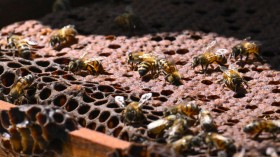The world's forests cover an estimated 30 percent of the earth's land, and they are vital to protecting water and land resources, reducing climate change, and maintaining biodiversity, according to the Global Environment Facility. Despite the importance of forests, deforestation is increasing at a rapid speed globally, and it's damaging tropical forests where biodiversity is maintained.
Climate activists support large-scale tree planting worldwide to help suck up excess carbon dioxide to mitigate climate change. However, in a Perspective article published in the Science Journal on May 21, two climate scientists say that planting trees to reduce greenhouse gas emissions directly could be a pipe dream. According to David Breshears from the University of Arizona, tree planting is a perfect option for climate activists because it requires less effort and is inexpensive. He adds that while planting more trees could slow down ongoing global warming, we're losing trees because of the current warming. So how do we save the forests? Here are a few effective forest management practices.
Forest thinning
Breshears and his colleague, Jonathan Overpeck, a dean at the University of Michigan, propose implementing forest management practices that target predictable vegetation changes. So, rather than maintaining forests like in the 20th century, forest management should involve thinning or removing some trees to create space for others to grow. Another reason thinning is perfect for forest management is that it reduces fuel buildup that causes wildfires and minimizes the risk of insect infestation and diseases that affect the growth of trees. It also allows the replacement of some tree species with new ones that promise to thrive for many decades.
Exotic vegetation eradication
Invasive or exotic vegetations are species introduced from a foreign country into a new region outside their habitat either on purpose or by accident. While invasive plants are beautiful, they overwhelm the forest ecosystem as they tend to outgrow native species. As a result, they reduce wildlife habitats and disrupt forest biodiversity. That's why removing non-native plant species by applying herbicides, mowing, and pulling should be a top consideration in forest management. Doing so helps preserve watersheds and native tree species, thereby maintaining a healthy and natural ecosystem. In forests where non-native species include full-grown trees, felling or cutting them is highly recommended. Experts also advise investing in stump grinding services. Removing tree stumps using the grinding method helps prevent the spread of pests and diseases that remain in non-native trees' stumps.
Fire as a forest management tool
Fire can be a valuable forest management tool if controlled and managed correctly, especially in tropical forests. Contained fire helps manipulate forest vegetation structure, composition, and reduce fuel loads, hence preventing catastrophic wildfires. Using fire in forest management also creates and maintains a mosaic of vegetation across appropriate locations to improve wildlife habitats. However, to achieve the best outcomes, fire should be used at correct intervals and intensity so that some parts of the forest remain burned and unburned.
Forest management is key to maintaining plant biodiversity, preserving water resources and wildlife habitat, and mitigating greenhouse gases. And while planting trees at a large scale is a perfect tool for forest management, foresters should integrate other practices. This includes using fire at controlled intervals, removing non-native vegetation, and thinning forests.
© 2024 NatureWorldNews.com All rights reserved. Do not reproduce without permission.
* This is a contributed article and this content does not necessarily represent the views of natureworldnews.com






